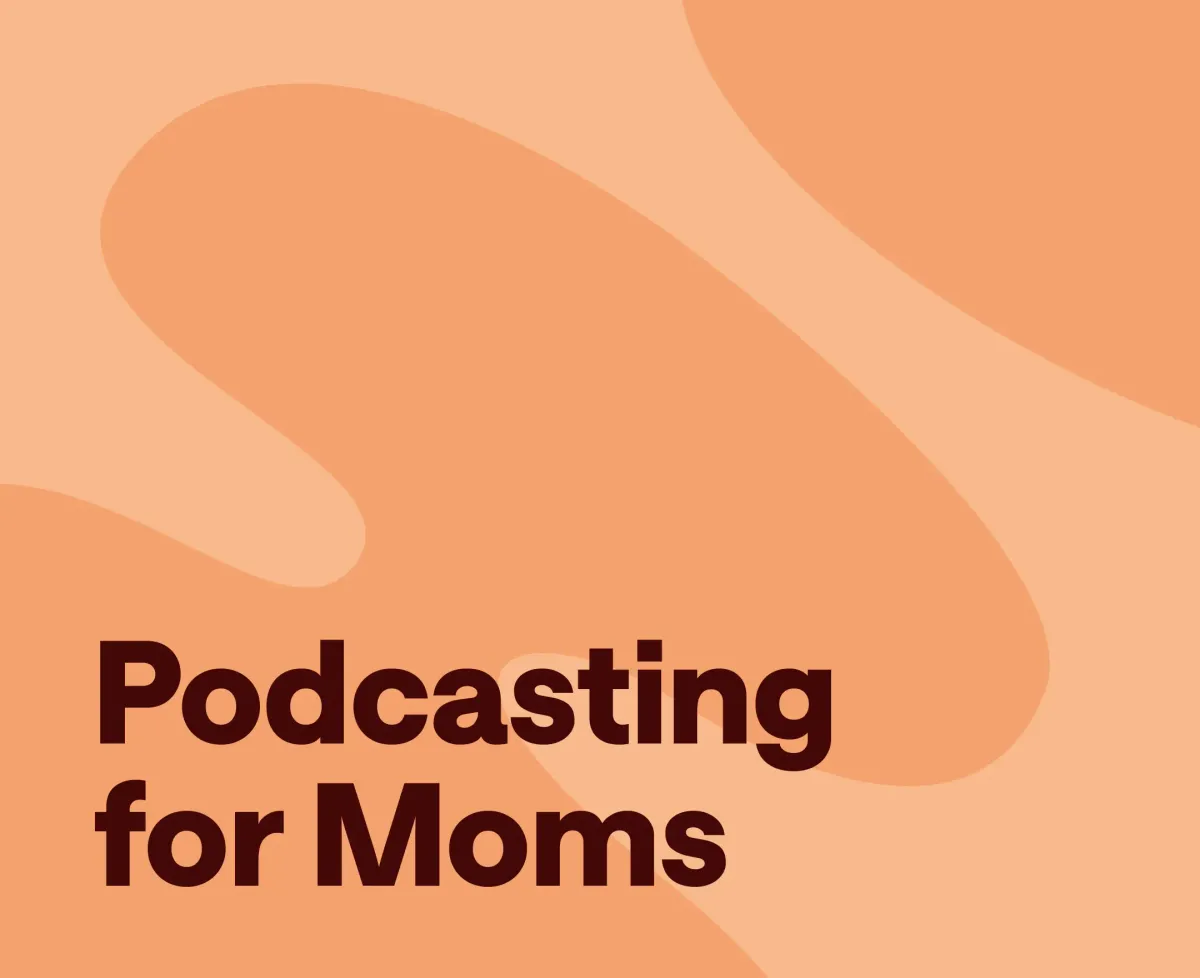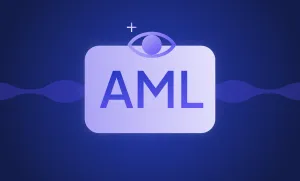Are you a mom looking to share pro tips on parenting? Or, are you an advocate for moms and want to create a platform for them to get support, inspiration, and valuable insights?
Whether you’re a seasoned parent with years of experience or a new mom navigating the challenges of motherhood, starting a podcast could be the perfect choice.
Podcasts are no longer a niche medium. A whopping 70 million people listened to a podcast in 2023. In the same year, nearly half of Americans 12 and older had listened to a podcast.
People listen to podcasts for entertainment, education, inspiration, and companionship. By starting your own, you can connect with fellow moms, share your experiences, and build a supportive community.
Today, we’ll share some simple tips on starting a podcast and walk you through creating a platform that resonates with mothers like you.
Starting a Moms Podcast: Tips & Best Practices
Use these tried-and-true tips to get a moms podcast off the ground.
1) Know Your Target Audience
Of course, your target audience is moms. But you must be able to tap into their pain points and challenges. That way, they’re more likely to engage with your podcast.
2) Discover Pain Points
So, take a moment to think about your target audience. What challenges are they facing in motherhood? What topics would interest them the most?
Some possible content ideas include:
– Product reviews and recommendations
– Family activities and adventures
– Relationships and marriage
– Parenting tips and advice
– Self-care and wellness
– Work-life balance
– Expert interviews
These are all some pretty good guesses of the type of content mothers might be interested in. But it can also be helpful to just ask them.
3) Gather Feedback
If you already have a strong following of moms, pay attention to their feedback through comments, messages, surveys, and social media interactions. What questions are they asking? What topics are they interested in?
You can also join mom communities to get a pulse on the latest trends, concerns, and conversations moms are having. Online forums, Facebook groups, and other mom communities. Look for recurring themes and topics that generate the most engagement.
MomTalk is a popular Facebook private group for mothers, with nearly 18,000 members.
Consider doing surveys or polls to gather feedback from your audience about their preferences, interests, and pain points. Ask them what type of content they enjoy and what they’d like to see you discuss on your podcast.
4) Do Some Research
Use tools like Google Trends, Semrush, or BuzzSumo to identify popular keywords and trending topics related to motherhood, parenting, and family life.
5) Get Creative
Lastly, tap into your own experience. If you’re a mom yourself, then you know firsthand the challenges mothers face and the different types of content they might be interested in.
Think about what helped you solve those challenges. Maybe you can share those personal stories and insights with your audience.
6) Plan Your Content
Now that you have a sense of your audience’s needs, you can plan your content and the topics you’ll discuss on your podcast.
7) Provide Value
Whatever topics you choose, just make sure they provide value to your audience. As someone who has firsthand experience of parenthood, it can be easy for you to lose sight of the fact that not all parenting journeys are the same.
So, make sure the tips and insights you share are useful for any mom. That means catering to the different needs and experiences of all mothers who tune into your podcast.
The Mom Hour is a great podcast that offers practical tips and encouragement for moms who want to enjoy motherhood more and relieve stress. This is something virtually every parent can relate to.
One of the podcast’s most recent episodes covers topics like how parenting changes as kids hit new milestones, finding purpose beyond motherhood, and starting conversations with children about the expectations moms have for them after high school.
8) Touch on a Variety of Topics
It’s also okay to explore other topics that may not directly relate to parenthood but can still affect moms’ overall well-being.
As you curate content for your episodes, consider discussing a range of topics that resonate with your audience, such as the challenges of balancing personal health and family life.
For instance, a discussion on the importance of self-care could subtly incorporate the latest health trends like oral semaglutide, a medication indicated for weight management, which has been gaining attention for its potential benefits when combined with a healthy lifestyle.
This approach not only enriches your content but also provides value to listeners seeking practical and informative discussions.
You could also discuss budgeting tips, family financial planning, and the advantages of using personal finance apps that can provide immense value. These apps help track expenses and income, even linking to your retirement accounts or investment portfolios, making it easier for families to achieve their financial goals and streamline their retirement planning.
9) Set a Consistent Publishing Schedule
After determining the topics you’ll be discussing for your podcast, start thinking about a publishing schedule. This will be how often you’ll be releasing episodes. Some podcasters post weekly, while some post monthly.
Your posting frequency will depend on your own personal preferences, availability, and other factors. If you’re not sure, you can always ask your audience how often they’d like to hear your podcast.
10) Think About Episode Length
Consider the length of your episodes. Podcast episode lengths can vary, ranging from a few minutes to over an hour.
Busy working moms may not have time to sit through longer episodes, while stay-at-home moms may be able to dedicate an hour or more to listening.
Or, maybe you’re covering simple topics like feeding schedules or sleep training that don’t need extensive time to discuss.
On the other hand, you might be touching on more complex concepts, such as navigating sibling dynamics or supporting children with special needs.
So, when you think about episode length, it all depends on your specific audience and the type of content you’re covering.
11) Choose a Podcast Format
Think about your episode format. Do you want to host interviews with parenting experts, popular mom influencers, or parenting bloggers?
What about solo episodes or panel discussions about common challenges of motherhood? If you can’t decide, you can do a combination of all of these. It’s up to you, just as long as your target audience is happy.
12) Design Your Cover Art & Branding
Choose a catchy, memorable name for your podcast. Since you’ll be hosting a moms podcast, you could pick something that represents motherhood and parenting, like Momversations: Real Talk for Moms or Momming Made Easy.
Next, design eye-catching cover art that reflects your podcast’s theme and appeals to your target audience. Consider creating a logo and color scheme to build a distinct visual identity for your podcast.
A tool like Canva can help you create visual branding elements with ease.
Check out some of these cool, customizable podcast cover templates.
13) Get the Right Equipment & Tools
No podcast is complete without recording equipment and tools. Here are some of the basic things you need:
– Pop-up sound or acoustic treatment
– USB or XLR microphone
– Pop filter or windscreen
– Copyright-free music
– Recording software
– Audio/video scripts
– Shock mount
– Headphones
– Mic stand
14) Choose Your Podcast Software and Platforms
To ensure high-quality audio and a seamless listening experience, use podcast editing software. If you choose to do a video podcast, look for software that offers video editing as well.
Consider tools like AI editing features. These can help you edit and enhance your content with just a few clicks. Additionally, they provide the capability to quickly produce a complete podcast with either a dynamic AI-generated voice or a duplicate of your own voice by utilizing a script.
Once you’ve chosen the right software, decide on a podcast hosting service that’ll store your audio files and distribute them to podcast platforms like Apple, Spotify, Audible, and Stitcher.
Libsyn (Liberated Syndication), Podbean, Anchor, and BuzzSprout are great podcast hosting providers.
Many of these platforms allow you to create a free, customizable website where you can post your transcripts and episodes. It can also provide listeners with more information about your podcast and hosts.
After choosing your hosting service, fill out your podcast information, add your artwork, pick a category, upload your episodes, and write show notes.
Then, send your RSS feed to all the top directories and podcast-listening apps.
15) Promote Your Podcast
Now that everything is in order, it’s time to introduce your podcast to the world.
Before its official launch, build up hype. That way, people will be looking forward to your podcast.
Promote it on your social platforms. Your followers are likely to watch your podcast, especially if they’ve already engaged with your social media content before.
If you already have a large email list, start sending blasts to let subscribers know your podcast is up and ready.
You can also use paid advertising to get more eyes on your podcast. Or, try to get featured on Apple Podcasts’ New and Noteworthy.
Creating striking artwork, optimizing your episode titles, and adding lots of value can increase your chances of impressing Apple’s team of editors.
When you submit the Apple Podcasts’ promotional request form, make sure you include a:
– Description of why your podcast stands out
– Descriptive summary of your podcast
– Short bio of hosts and guests
– Strong subject line
16) Monetize Your Podcast
There are many ways to monetize your moms' podcast. One way is to look for sponsors.
Find companies that are relevant to your mom audience. While they don’t necessarily have to be directly related to parenting, make sure they can provide value to mothers in some way.
For example, as a mom, whether you need medicine for your littles or need to do some last-minute grocery shopping to feed your children, you know the hassle of shopping online and not trusting the delivery process.
So why not talk to your trusted courier service that you’ve used many times and ask them to sponsor you? You can include a podcast segment to discuss and promote their services.
Also, consider using an AdTech platform to connect you with advertisers. You can choose from pre-roll, mid-roll, and post-roll ads, which determine when they’ll appear within your content.
Happy Podcasting
You’re a mom. You know what it’s like to chase toddlers around, clean up spills, be overwhelmed, and juggle a million things at once.
So, why not share your experiences on a podcast? What you’ve gone through as a parent and how you’ve excelled can help other moms out there.
By starting a moms' podcast, you can build a community where moms can laugh, cry, and navigate the beautiful chaos of motherhood together.
Good luck!
About the author: Ryan Robinson

|
I'm a blogger, podcaster and (recovering) side project addict that teaches 500,000 monthly readers how to start a blog and grow a profitable side business at ryrob.com |








